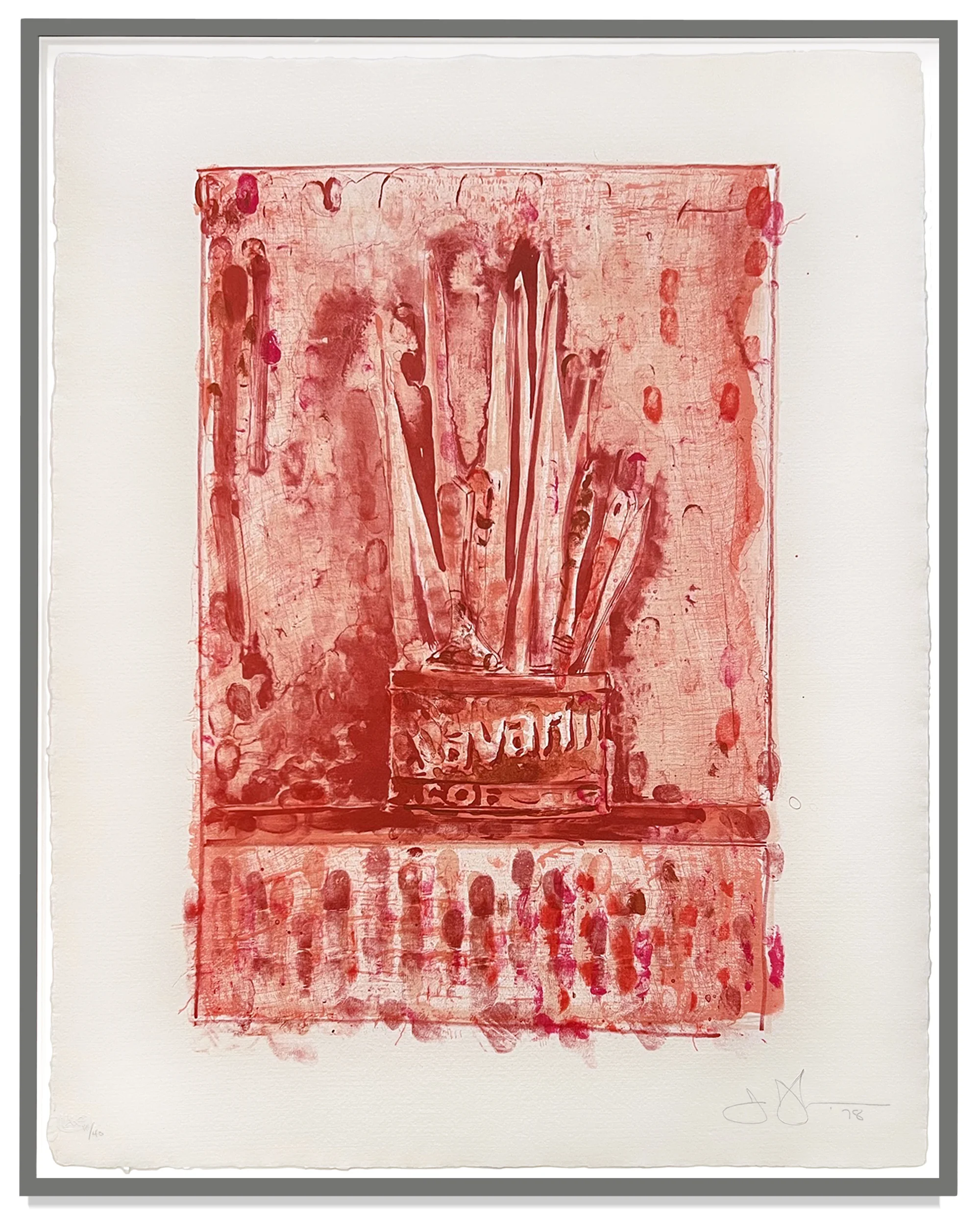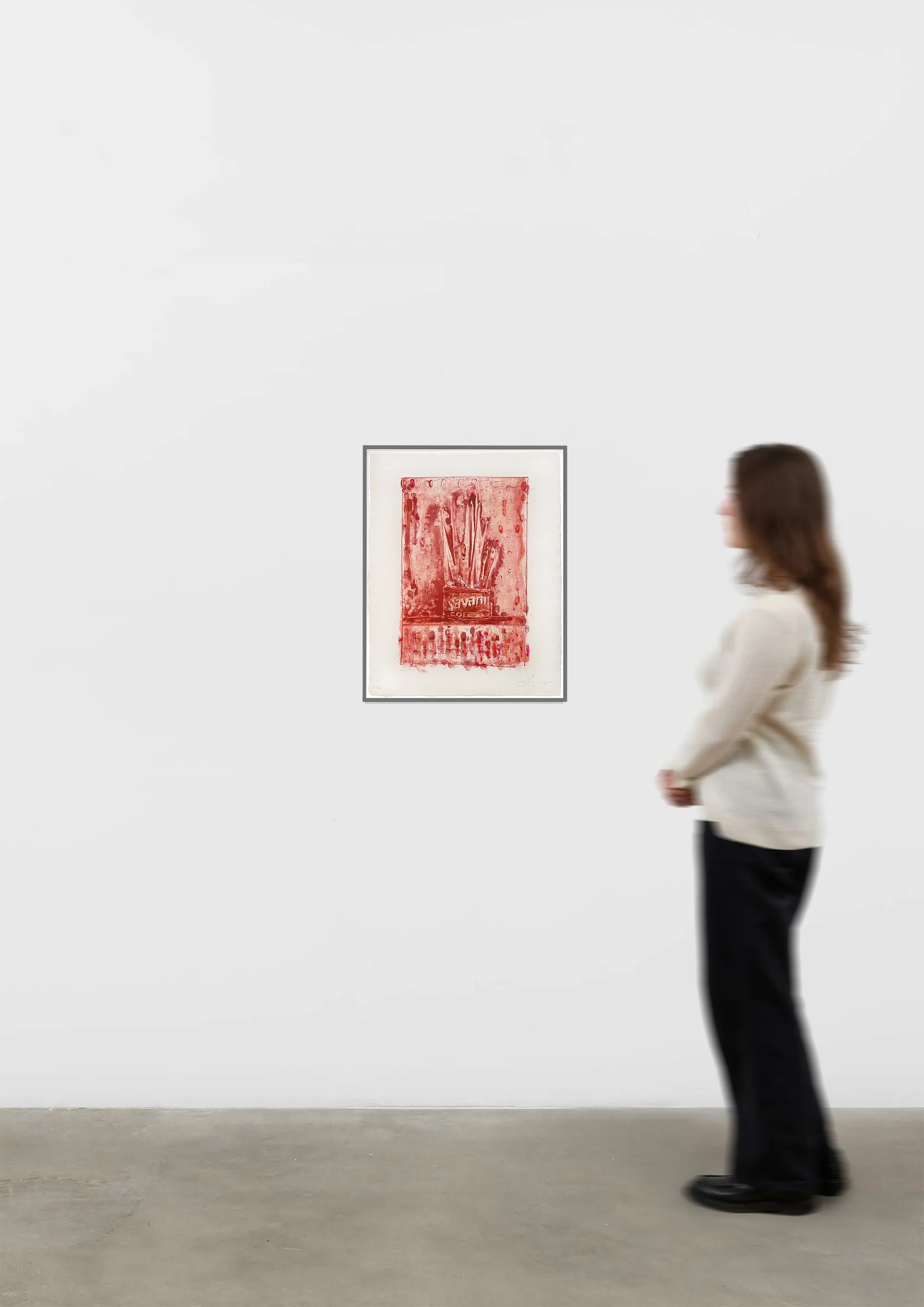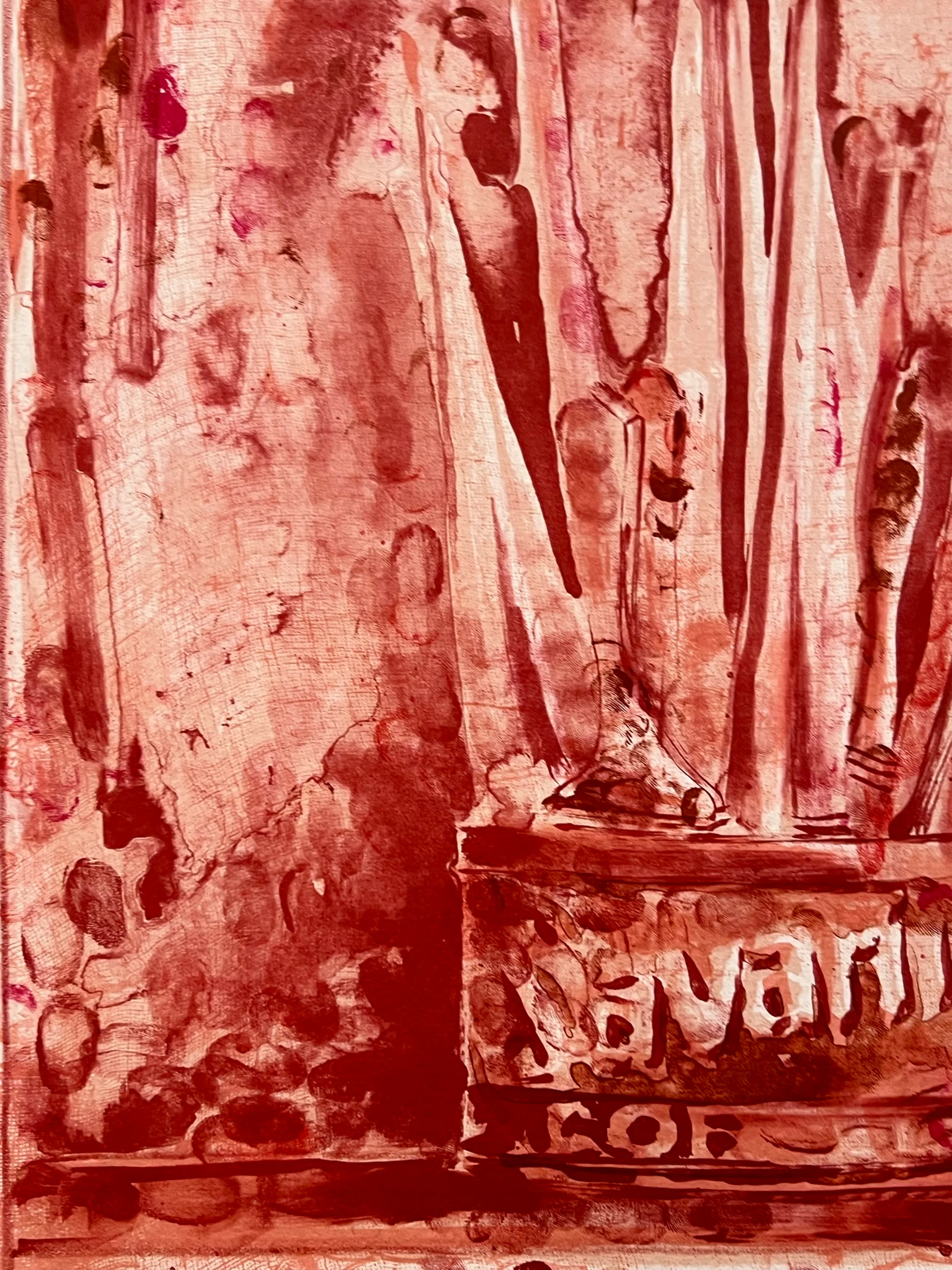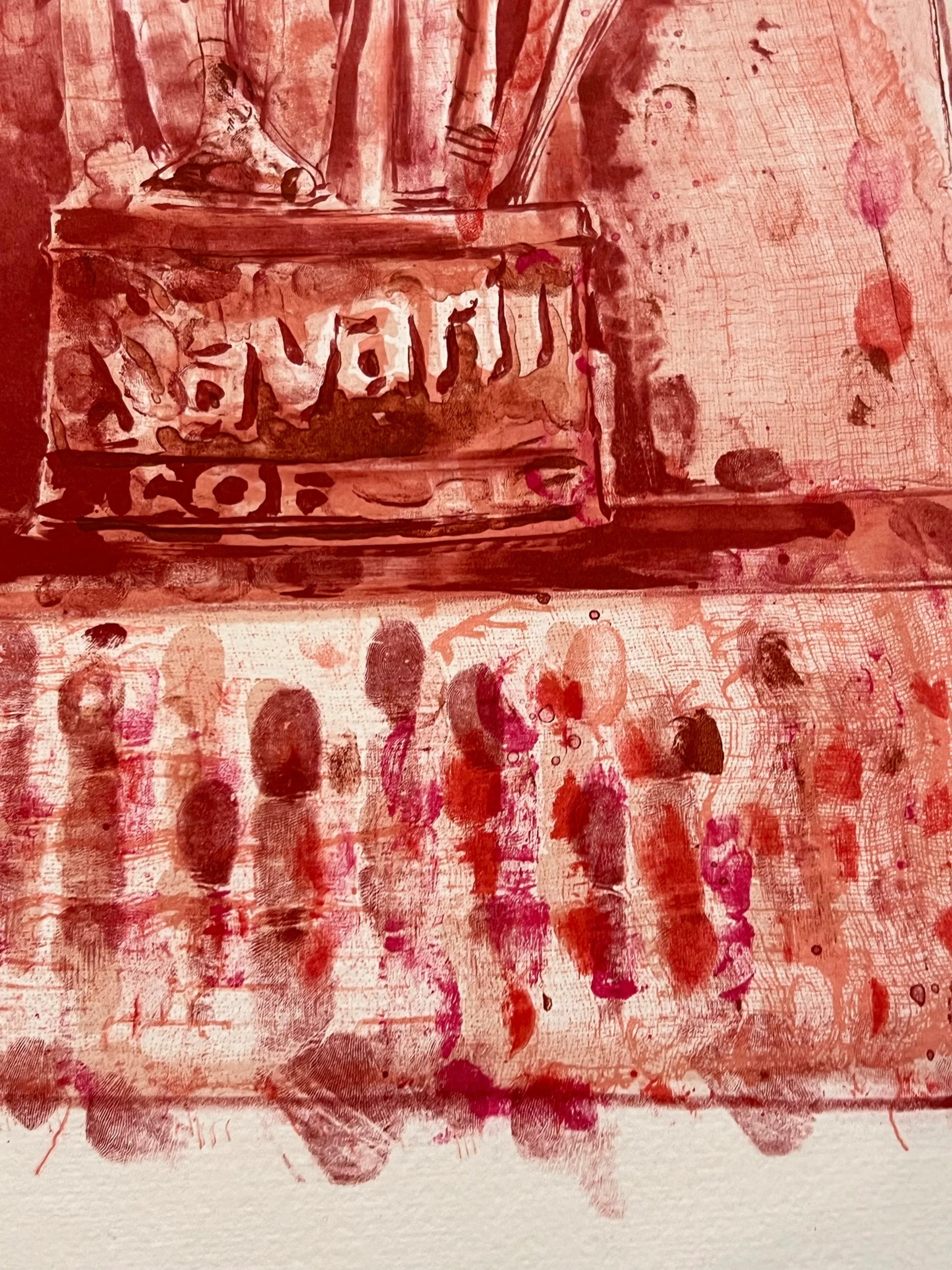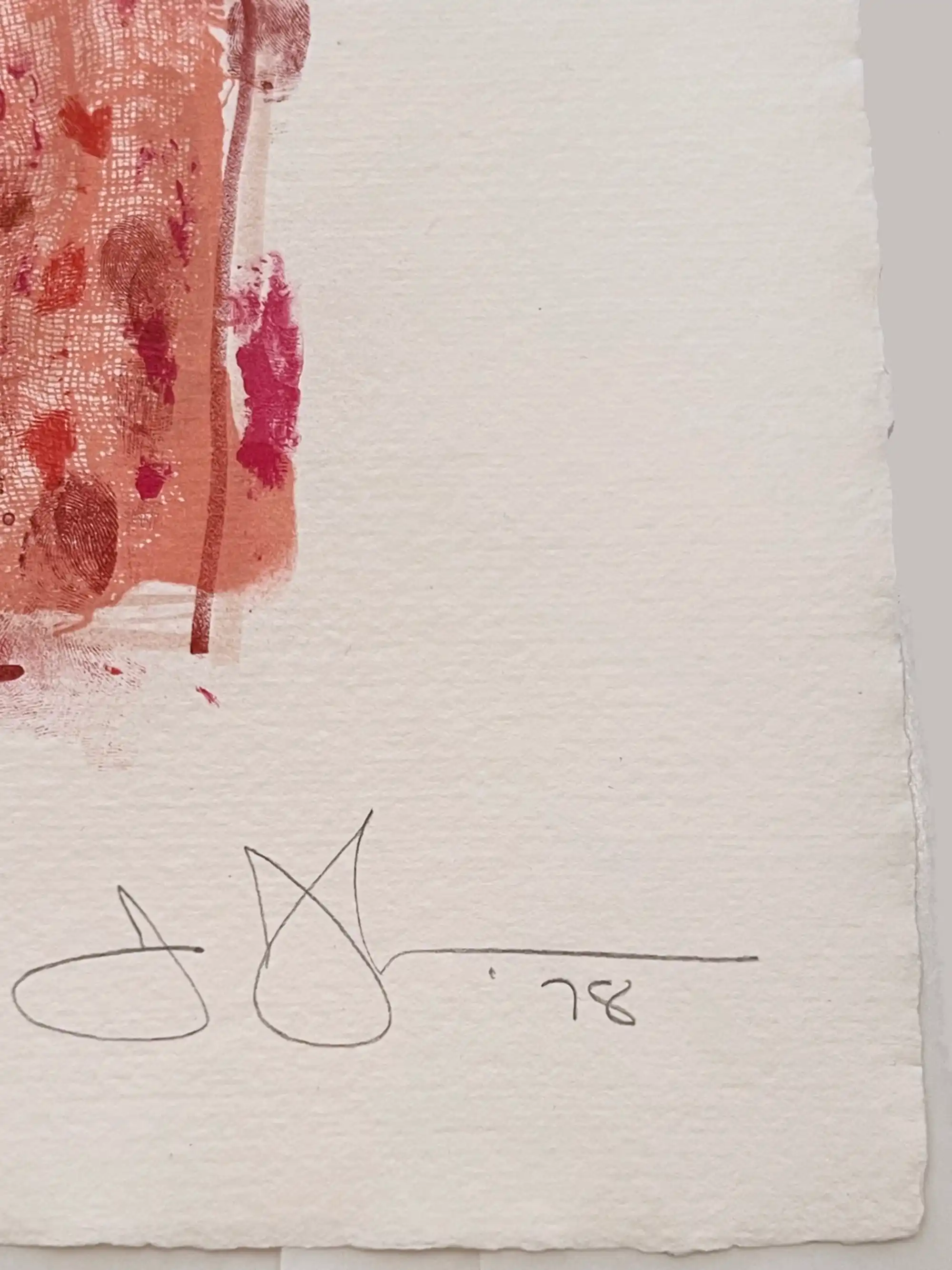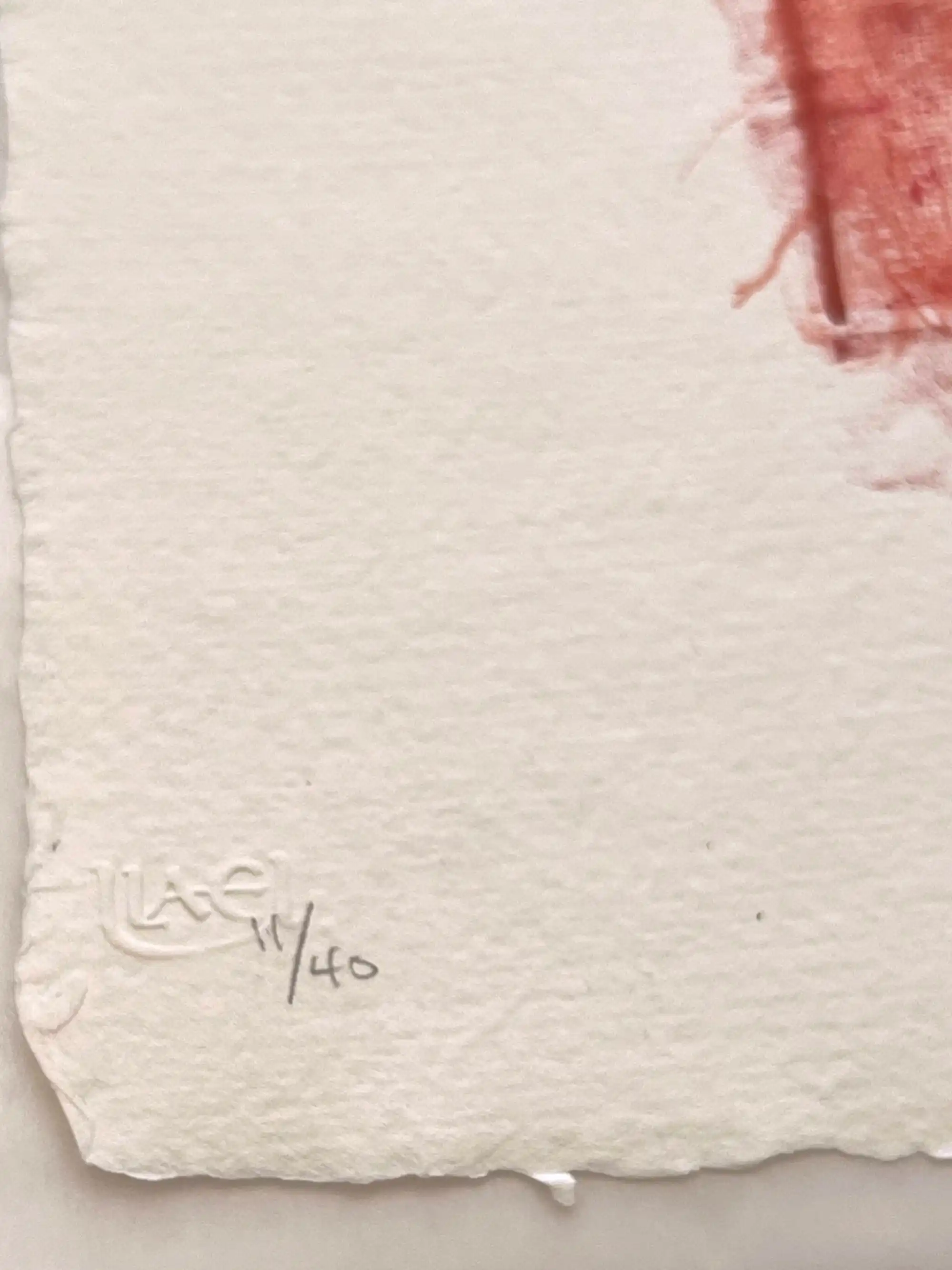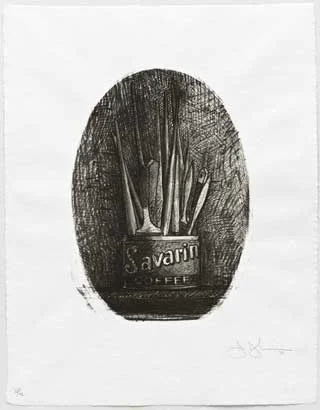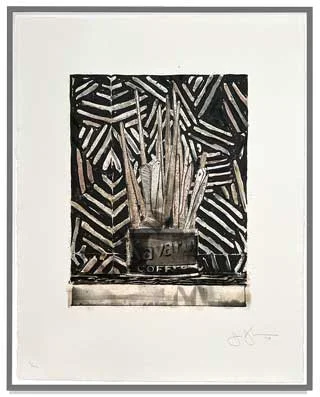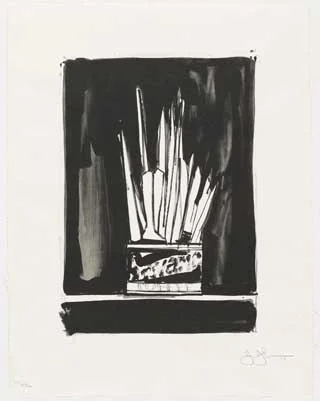Savarin 3 (Red)
(ULAE 193), 1978
paper: 26 x 20 1/2 inches
image: 20 7/8 by 14 3/8 inches
frame: 27 1/8 x 21 inches
edition: 42 with 7 AP's & 3 PP's
signed & dated lower right, numbered lower left, in pencil
ULAE blindstamp bottom left
printed by: Bill Goldston, James V. Smith, Keith Brintzenhofe
published by: Universal Limited Art Editions, 1979
© 2024 Jasper Johns / Licensed by VAGA at Artists Rights Society (ARS), NY
Literature
Judith Goldman, Jasper Johns Prints 1977-1981, Thomas Segal Gallery, Boston, MA, 1981, n.p., Segal 7, another impression reproduced full page black and white.
James N. Wood, Amei Wallach, Esther Sparks, Universal Limited Art Editions: A History and Catalogue: The First Twenty-Five Years, The Art Institute of Chicago and Harry N. Abrams, Inc., 1989, pg. 145, another impression reproduced in color.
Michel Butor, Kathleen Slavin, Jasper Johns Gravures Dessins 1960-1991, Foundation Vincent Van Gogh, 1992, no. 63, pg. 113, another impression reproduced in full-page color.
Richard Field, The Prints of Jasper Johns 1960-1993: A Catalogue Raisonne, ULAE, New York, 1994, Catalogue Reference ULAE 193, n.p., another impression reproduced in full-page color.
Susan Lorence, Technique and Collaboration in the Prints of Jasper Johns, Castelli Gallery, New York, 1996, Catalogue Reference 25, n.p., another impression reproduced in black and white
Exhibited
The Museum of Modern Art, New York, Recent Acquisitions: American Prints, Nov 16, 1978–Feb 20, 1979, another impression exhibited.
The Museum of Modern Art, New York, Jasper Johns: A Print Retrospective, May 19–Aug 19, 1986, another impression exhibited.
Foundation Vincent Van Gogh, Arles, Jasper Johns Prints and Drawings from the Castelli collection, July 4–September 30, 1992, another impression exhibited.
The Museum of Modern Art, New York, Focus: Jasper Johns, December 5, 2008–February 16, 2009, other impressions exhibited.
The Atkinson, Southport, Warhol to Walker: American prints from pop art to today, January 13–March 10, 2018, other impression exhibited.
Carnegie Museum of Art, Pittsburgh, An Art of Changes: Jasper Johns Prints, 1960–2018, October 12–January 20, 2020, another impression exhibited; exhibition traveled to these venues:
Walker Art Center, Minneapolis, February 16, 2020–January 3, 2021
Tampa Art Museum, Florida, April 28–September 5, 2021
Grand Rapids Art Museum, Michigan, October 2–January 9, 2022
Parrish Art Museum, Water Mill, New York, April 23–July 10, 2022
Whitney Museum of American Art, New York, Jasper Johns Mind/Mirror, September 29, 2021–February 13, 2022, another impression exhibited.
Selected Museum Collections
Walker Art Center, Minneapolis
Museum of Modern Art, New York
Art Institute of Chicago, Chicago
The Broad Museum, Los Angeles
National Gallery of Art, Washington D.C. — includes seven trial proofs of Savarin 3, 1978 by Jasper Johns
